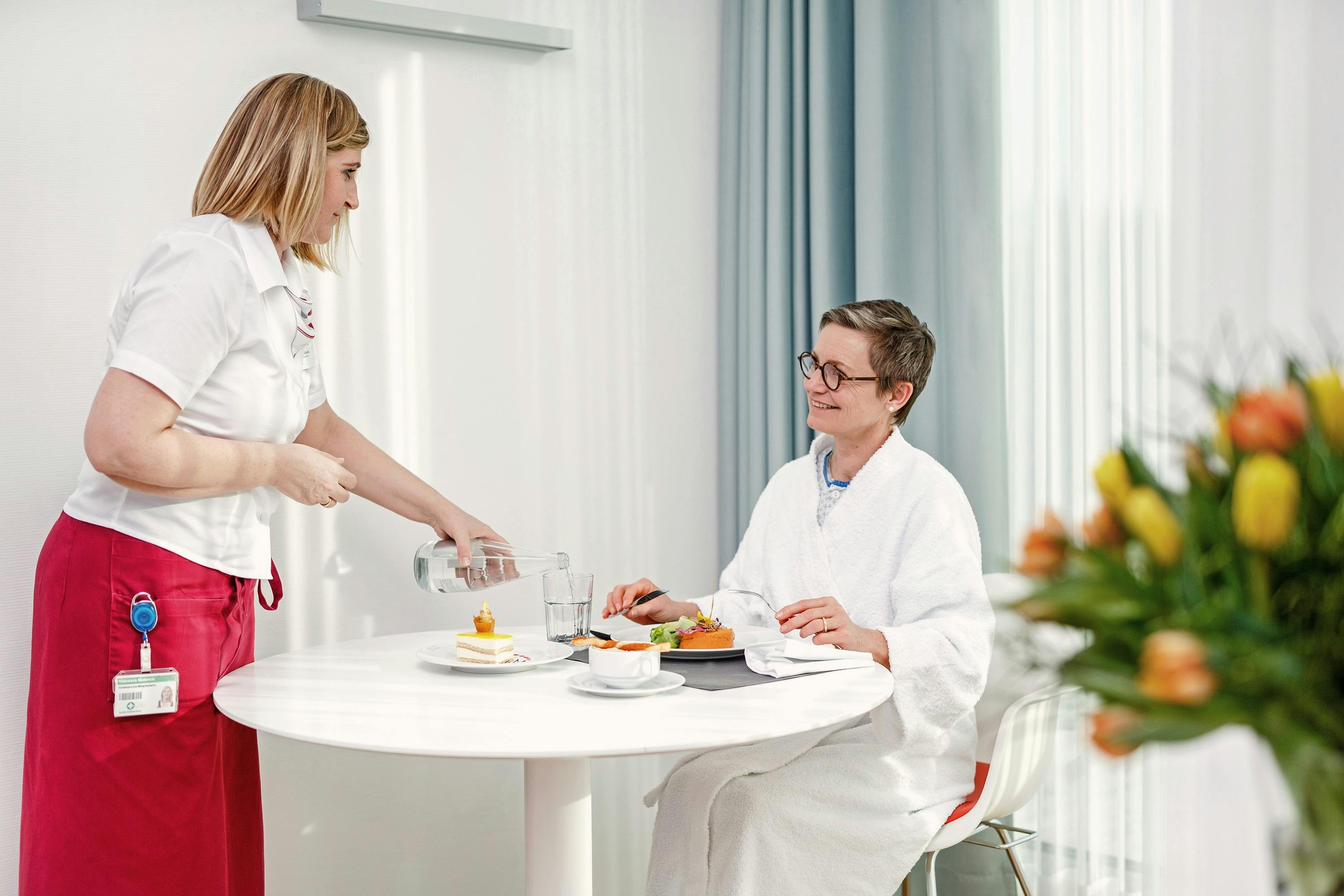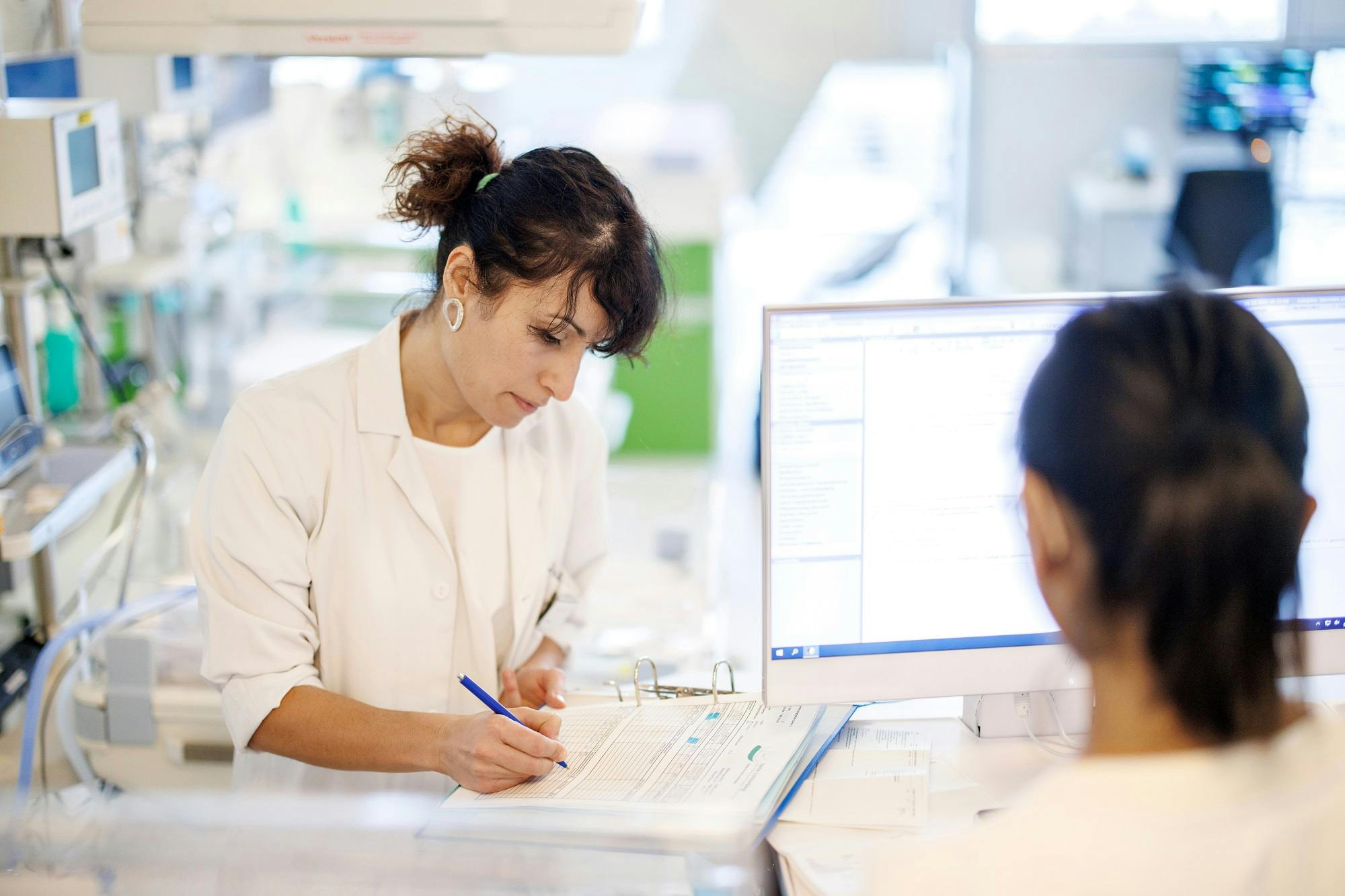The menopause from the perspective of conventional medicine
Dr. med. Helene Bamert-Stoop
July 11, 2023
4 min
Menopause from the perspective of conventional medicine: Dr Helene Bamert-Stoop explains in an interview what happens to the hormones during the menopause and what can be achieved with hormone replacement therapy.
Dr Bamert-Stoop, in brief, what happens to the female hormones during the menopause?
The ovary, the main production site of oestrogen and the corpus luteum hormone, ages and produces less and less corpus luteum hormone and, in the course of time, less and less oestrogen. With the menopause, the ovary largely stops working. This decline occurs over a period of years, sometimes fluctuating, sometimes rapidly. Women notice the hormone imbalance and also the hormone deficiency in the form of menopausal symptoms.
What are the causes of symptoms such as hot flushes, urogenital dryness and cycle disorders during the menopause?
Hot flushes are mainly caused by a lack of oestrogen, which temporarily throws the body's thermoregulation out of balance. Urogenital dryness is also due to oestrogen deficiency: The skin becomes thinner, more sensitive, loses elasticity and the muscles of the pelvic floor and urethra also break down somewhat.
What are the advantages and disadvantages of hormone replacement therapy?
The advantages are that hormone replacement therapy has been proven to help reduce symptoms. Patients feel more comfortable in their bodies again. Oestrogen also has a positive effect on bone health and blood vessels. Depending on the patient, however, the risk factors must also be carefully analysed and weighed up, as even healthy patients have a small risk of breast and uterine cancer and thrombosis.
What types of hormone replacement therapy are available?
Oestrogen is available as a gel or patch for whole-body therapy, or only as a vaginal gel or suppository for purely vaginal use. The luteal hormone can be swallowed as capsules or used vaginally. There are also tablets and patches that contain a combination of both hormones. Each patient can receive individualised advice and treatment.
How are hormone replacement therapies usually used?
If the uterus is no longer present, oestrogen alone will be used. If the patient still has a uterus, a combination with a corpus luteum hormone is mandatory. Depending on the preparation, oestradiol is used daily or twice a week. The corpus luteum hormone can also be administered in the form of a hormone coil for 5 years.
0/0
Dr. med. Helene Bamert-Stoop
Weitere Beiträge
Counsellor
Hormone fluctuations in winter: What's really behind them?
Many women experience changes in their physical and mental well-being in winter. They feel tired more often, less resilient or more emotionally sensitive. Cycle changes or more intense premenstrual symptoms are also noticed more often during this time. In addition to external factors such as the cold, less exercise or a change in lifestyle, hormonal processes can also play a role.
Counsellor
Spinal surgery: everything you need to know
At Zollikerberg Hospital, the highest precision applies to one of the most central and at the same time most demanding areas of the body - the spine. Spinal surgery here means not only modern, minimally invasive technology, but above all sound expertise, experience and careful, holistic care. This is what Dr Filippo Mandelli, Head of the Spinal Surgery Clinic, and his team stand for. They treat conditions such as herniated discs, spinal canal stenosis, spondylolisthesis, spinal deformities and degenerative changes competently and sensitively and accompany patients on their way to greater stability and quality of life. In this interview, you can find out what is particularly important in these complex interventions - and what modern spinal medicine can achieve today.
Counsellor
Eyelid lift (blepharoplasty) for drooping eyelids - a brief overview
The eyes are the mirror of our soul - and yet drooping eyelids, bags under the eyes or sagging skin on the eyelid can leave a tired and older impression. If you would like to regain an alert, fresh look, an eyelid lift (blepharoplasty) at Zurich Plastic Surgery can help. In this blog post, Prof Dr Hisham Fansa, Head of Plastic Surgery Zurich, explains why many people decide to have their drooping eyelids corrected and what is important during this procedure.


